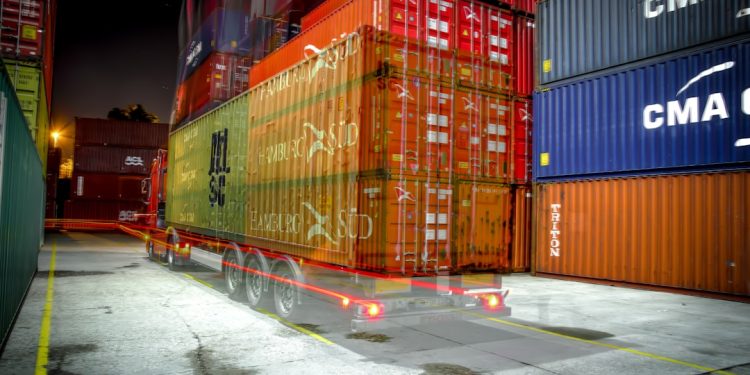No products in the cart.
The AI Revolution in Logistics: Safety First
AI is reshaping logistics safety checks, creating new compliance roles, and ensuring a safer workplace. Discover the implications for young professionals.
In the bustling world of logistics, where every second counts and safety is paramount, a quiet revolution is taking place. Enter AI—an unsung hero in the quest for safer, more efficient operations. In warehouses and shipping yards, algorithms are stepping in to perform safety checks that once relied on human eyes and instincts. But this isn’t just about automation; it’s about redefining roles and responsibilities in a rapidly evolving landscape.
Imagine a bustling warehouse, forklifts gliding through aisles like dancers in a choreographed performance. Safety inspectors, once the vigilant overseers of this dance, are now aided—or in some cases, replaced—by AI systems that can analyze data faster than any human could. These systems monitor everything from equipment conditions to worker movements, flagging potential hazards before they escalate. It’s a game changer, promising not only to enhance safety but also to create new compliance roles that didn’t exist a decade ago.

The rise of AI in logistics is not merely a technological advancement; it’s a response to the pressing need for safety in an industry that operates at breakneck speed. A recent report from the World Economic Forum highlighted that logistics accidents account for nearly 25% of workplace fatalities globally. This staggering statistic has prompted companies to seek innovative solutions, leading to the integration of AI technologies.
 Career Advice
Career AdviceDecoding Company Culture: Strategies for Job Seekers
Understanding company culture is vital for job seekers. This guide offers a checklist and strategic questions to ensure a good…
AI’s ability to process vast amounts of data in real-time means that it can identify patterns and predict incidents before they happen. For instance, sensors embedded in machinery can send alerts when parts are due for maintenance, minimizing the risk of breakdowns that could lead to accidents. In this way, AI is transforming the role of the safety inspector from someone who reacts to incidents into a proactive strategist who uses data to foresee and prevent issues.
According to a study by McKinsey, nearly 30% of jobs in logistics could be automated by 2030, raising concerns about the future of the workforce.
However, the transition to AI-driven safety checks isn’t without its challenges. Many seasoned professionals in logistics worry about job security as machines take on tasks traditionally performed by humans. According to a study by McKinsey, nearly 30% of jobs in logistics could be automated by 2030, raising concerns about the future of the workforce.
Yet, experts argue that the introduction of AI will create new opportunities rather than eliminate them. “AI is not here to replace us, but to enhance our capabilities,” says Dr. Samira Patel, a logistics technology consultant. “The key is to adapt and upskill. There will always be a need for human oversight, especially in interpreting data and making judgment calls.”
This sentiment resonates with young professionals entering the logistics field. Many are embracing the challenge of learning to work alongside AI, viewing it as an opportunity to elevate their careers. Universities and training programs are increasingly incorporating AI and data analytics into their curricula, ensuring that the next generation of logistics professionals is well-equipped to thrive in this new environment.
 Business Innovation
Business InnovationIndia’s New Portal for Live Event Clearances: A Game Changer for the Industry
India is launching a single-window portal for live event clearances, aiming to simplify processes and boost the industry. Here's what…
Read More →Moreover, companies are recognizing the importance of fostering a culture that embraces change. Organizations like DHL and FedEx are investing in training programs to help employees transition into new roles that focus on managing AI systems and interpreting the data they generate. As these companies move forward, they are not just improving safety; they are also creating a more dynamic and skilled workforce.
The implications extend beyond job creation. With AI taking on safety checks, businesses can streamline operations and reduce costs associated with workplace accidents. This efficiency not only benefits the bottom line but also enhances the overall safety culture within organizations. As safety becomes ingrained in the operational framework, employees are likely to feel more secure and valued, fostering greater job satisfaction and retention.
Many are embracing the challenge of learning to work alongside AI, viewing it as an opportunity to elevate their careers.
Looking ahead, the integration of AI in logistics safety checks is set to redefine the industry landscape. As technology continues to evolve, so too will the skill sets required in the workforce. The challenge will be for companies to strike a balance between leveraging technology and maintaining the human touch that is so vital in an industry built on collaboration and trust.
 Career Trends
Career TrendsWhy Many Indian Professionals Prefer Canadian Startups Over Local Firms
Many Indian professionals are choosing Canadian startups for better work culture and benefits, signaling a shift in talent migration.
Read More →For young professionals, the message is clear: adapt, learn, and embrace the AI revolution. The logistics industry is not just about moving goods; it’s about moving forward, and those willing to evolve will find themselves at the forefront of an exciting new era. As we stand on the brink of this transformation, one thing is certain—AI is not just a tool; it is a partner in the journey toward safer, more efficient logistics.











